Vallisneria asiatica
Scientific name: Vallisneria asiatica
Family: Hydrocharitaceae
Maximum size reached under cultivation: 30 - 60 cm (11.81 - 23.62 inch)
014
Recommended pH range: 6.5 - 7.6
Recommended water hardness: 4 - 18°dGH (71.43 - 321.43ppm)
0°C 32°F30°C 86°F
Recommended temperature range: 20 - 27 °C (68 - 80.6°F)
Preferred propagation method: Runners
Native to: South Asia
Growth rate: Fast
Recommended substrate: Fine gravel
Lighting requirements: Bright
Ideal placement in tank: Background
Common Name
Asian Vallis, Corkscrew Vallis
Propagation
Vallisneria asiatica is an easy plant to propagate, making it ideal for aquarists of all experience levels. This plant spreads through runners, which are sent out beneath the substrate. New plantlets develop along these runners and begin to establish their own root systems. Once the daughter plants are large enough and have developed a healthy root structure, they can be separated from the mother plant and either left to grow in place or transplanted to other areas of the aquarium.
When planting these plantlets, ensure that the crown of the plant remains above the substrate. The crown is the lighter-colored part where the leaves emerge, and burying it too deep may lead to rot. While this species does well in standard gravel substrates, using laterite or adding root tablets can help accelerate root development and overall plant growth, as Vallisneria species are known to be heavy root feeders.
Difficulty
Easy
Short Description
Vallisneria asiatica is one of the easiest aquatic plants to care for, making it a popular choice for beginners and experienced aquarists alike. Known for its twisted, corkscrew-like leaves, this species can add a dynamic visual element to the aquarium. It is tolerant of a wide range of water parameters, and although it thrives in unheated tanks, it can adapt to warmer temperatures typically found in tropical setups. When grown in higher temperatures, it’s best to reduce the lighting intensity to prevent the plant from becoming leggy, which can lead to weaker leaves.
Proper care is necessary to avoid damage to the delicate leaves. If the leaves are fractured or damaged, they will begin to die off. However, many aquarists mistakenly believe that Vallisneria cannot be pruned. This is not true. With sharp scissors, you can trim back the leaves without harming the plant. Any leaves that are dying should be gently removed at the base to encourage healthy growth. Regular trimming can also help maintain the plant’s appearance and prevent overcrowding in the tank.
Due to its potential height - up to 60 cm (24 inches) - Vallisneria asiatica is best placed in the background or along the sides of the aquarium. It not only provides shelter and hiding places for fish but also enhances the overall aesthetic of the tank with its tall, twisting leaves. Additionally, the strong root system that develops once the plant is established makes it ideal for tanks with bottom-dwelling fish, as it can withstand digging and disruption from species that like to burrow in the substrate.
This species is also known for its versatility, as it can be used in both coldwater and tropical aquarium setups. While it prefers cooler temperatures, it will readily adapt to tropical conditions as long as the lighting is adjusted accordingly. The adaptability, ease of propagation, and unique appearance make Vallisneria asiatica a staple in many aquariums.
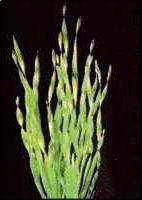
 Blyxa aubertii
Blyxa aubertii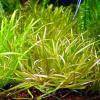 Blyxa japonica
Blyxa japonica Egeria densa
Egeria densa Elodea canadensis
Elodea canadensis Vallisneria contortionist
Vallisneria contortionist Vallisneria gigantea
Vallisneria gigantea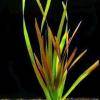 Vallisneria rubra
Vallisneria rubra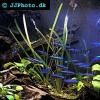 Vallisneria spiralis
Vallisneria spiralis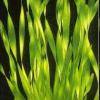 Vallisneria torta
Vallisneria torta